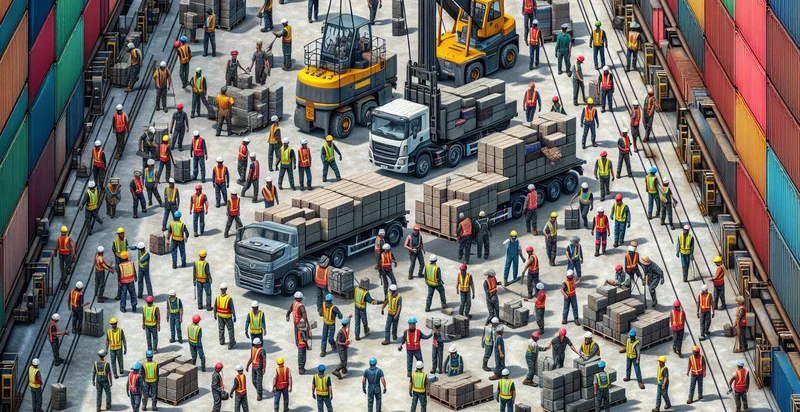Identify if dock workers are working
using AI
Below is a free classifier to identify if dock workers are working. Just upload your image, and our AI will predict if dock workers are working - in just seconds.

Contact us for API access
Or, use Nyckel to build highly-accurate custom classifiers in just minutes. No PhD required.
Get started
import nyckel
credentials = nyckel.Credentials("YOUR_CLIENT_ID", "YOUR_CLIENT_SECRET")
nyckel.invoke("if-dock-workers-are-working", "your_image_url", credentials)
fetch('https://www.nyckel.com/v1/functions/if-dock-workers-are-working/invoke', {
method: 'POST',
headers: {
'Authorization': 'Bearer ' + 'YOUR_BEARER_TOKEN',
'Content-Type': 'application/json',
},
body: JSON.stringify(
{"data": "your_image_url"}
)
})
.then(response => response.json())
.then(data => console.log(data));
curl -X POST \
-H "Content-Type: application/json" \
-H "Authorization: Bearer YOUR_BEARER_TOKEN" \
-d '{"data": "your_image_url"}' \
https://www.nyckel.com/v1/functions/if-dock-workers-are-working/invoke
How this classifier works
To start, upload your image. Our AI tool will then predict if dock workers are working.
This pretrained image model uses a Nyckel-created dataset and has 2 labels, including Workers Absent and Workers Present.
We'll also show a confidence score (the higher the number, the more confident the AI model is around if dock workers are working).
Whether you're just curious or building if dock workers are working detection into your application, we hope our classifier proves helpful.
Related Classifiers
Need to identify if dock workers are working at scale?
Get API or Zapier access to this classifier for free. It's perfect for:
- Workforce Management: This function can be utilized to monitor dock workers in real-time, allowing managers to analyze workforce availability. By identifying whether workers are present and actively engaged, companies can optimize labor allocation and reduce downtime.
- Safety Compliance Monitoring: The image classification function can assess whether dockworkers are adhering to safety protocols, such as wearing helmets and safety vests. By automating this process, businesses can enhance workplace safety and ensure compliance with regulatory standards.
- Operational Efficiency Analysis: By tracking the activity levels of dock workers, this function can provide insights into operational bottlenecks or inefficiencies. This information can help managers reorganize workflows and improve overall productivity.
- Attendance Verification: The function can serve as an automated attendance system, confirming the presence of dock workers on-site. This can streamline payroll processing and reduce administrative overhead associated with manual attendance tracking.
- Performance Benchmarking: Analyzing the working patterns of dock workers can help establish performance benchmarks. Managers can use this data to motivate employees, recognize high performers, or identify those who may need additional training.
- Incident Detection and Response: The image classification can aid in quickly detecting if dock workers are inactive during critical operational times, potentially indicating unsafe situations. This allows for rapid intervention to prevent accidents or operational failures.
- Resource Allocation for Equipment: By understanding the number of dock workers present and actively working, the function can inform decisions regarding equipment deployment. This ensures that resources are used efficiently, enhancing service delivery and reducing delays in cargo handling.


